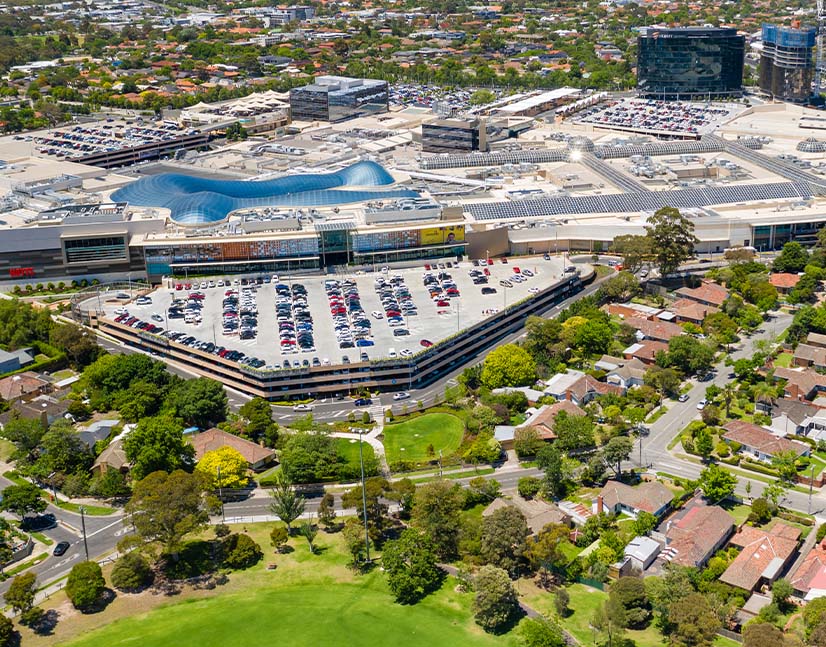
Green bond lift off
If socially responsible fixed-income asset classes, and in particular green bonds, become a consistent component of the Australian debt market it seems likely that March-April 2017 will be looked back on as a landmark period. Issuance volume hit an all-time high, including a clutch of breakthrough and innovative transactions.
Laurence Davison Managing Editor KANGANEWS
Deal flow in March alone topped A$2 billion (US$1.5 billion) across four transactions, where no previous month had seen more than a single deal pricing. Milestones for Australia in March (see table below) include the country’s largest-ever green-bond deal, its first-ever benchmark social bond and the first domestically placed green bond from a corporate issuer.
Issuers and arrangers active in this period universally highlight the fact that deal flow has grown in response to demand. Australian fixed-income investors say a growing portion of their mandates has some form of environment, social and governance (ESG) overlay. It is clear that even though a significant component of these mandates tends to be negative screening there is still a growing place in Australian fixed-income for accredited socially responsible securities.
What the next step for the local market might be remains to be seen, as capacity for green product is likely to encounter constraints on both the issuer and investor sides. But market participants believe the foundations have now been laid for consistent supply over the long term.
Australian socially responsible deals and milestones in 2017
| Pricing date | Issuer | Asset type | Volume (A$m) | Tenor (years) | Noteworthy facts |
|---|---|---|---|---|---|
| 14 Feb 17 | Flexi ABS Trust 2017-1 | Green ABS | 55* | 1.49** | Australia's second green securitisation |
| 15 Mar 17 | Queensland Treasury Corporation | Green bond | 750 | 7 | Australia's largest green-bond deal |
| 17 Mar 17 | National Australia Bank | Social bond (gender equality) | 500 | 5 | Australia's first benchmark social bond |
| 28 Mar 17 | Commonwealth Bank of Australia | Green bond | 650 | 5 | Australia's largest bank green bond |
| 30 Mar 17 | Investa Office Fund | Green bond | 150 | 7 | Australia's first corporate green bond |
| 12 Apr 17 | Investa Commercial Property Fund | Green bond | 100 | 10 | First 10-year corporate green bond in Australia |
* Part of a A$265 million securitisation trust.
** Weighted-average life.
Source: KangaNews 20 April 2017
Volume step up
Queensland Treasury Corporation (QTC) took deal volume to a new level with its A$750 million print on 15 March. The only previous semi-government green-bond in Australia was placed by Treasury Corporation of Victoria in July 2016, for a capped volume of A$300 million. The record at the time for domestic green bonds was the A$600 million priced by KfW Bankengruppe in March 2015, with the same volume issued by ANZ Banking Group two months later.
The volume reward for the issuer came on the back of a more detailed investor-engagement process than would be the case for a typical semi-government syndication. ANZ, Bank of America Merrill Lynch (BAML) and National Australia Bank (NAB) led the QTC transaction which was preceded by a domestic roadshow and extensive specifically deal-related international investor contact.
Grant Bush, deputy chief executive and managing director, funding and markets at QTC in Brisbane, tells KangaNews: “We undertook a domestic roadshow and also placed calls into Europe and the US time zones. Given this was our first green-bond deal, we felt it was important to explain the framework, the other parties in the transaction and the assets involved.”
The issuer garnered a book in excess of A$1 billion according to Paul White, co-head of capital markets at ANZ in Sydney. He adds that pricing – of 33.5 basis points over the April 2024 Australian Commonwealth government bond – was in line with the issuer’s liquid nominal curve. QTC resisted the temptation to try to tighten pricing further on the green bond, White adds, because it wanted to support a positive experience for investors in a debut deal of this type.
Although domestic accounts dominated the transaction, 24 per cent of paper was placed offshore – and one deal source says the US component might have been higher had it not been for the east-coast snowstorms around the time of pricing. By investor type, real money formed the largest component of the book by some distance.
Chad Karpes, managing director and head of debt capital markets and syndicate at BAML in Sydney, adds that US investors in general, and local green funds in particular, naturally favour US dollar issuance. Participation from US investors tends to come from “a select group of specific green accounts in the US that can buy Australian dollars”.
Meanwhile, Karpes continues: “In Europe, there are some green-specific accounts that can take Australian dollars but, as one would expect, have greater appetite for euros and US dollars.”
Even so, QTC is encouraged by the international component. Bush adds: “We were particularly pleased by the level of support from Europe, which was greater than we have seen in our vanilla benchmark transactions of late. We certainly felt we achieved our objective of investor diversification, including by attracting investors into the transaction that we had not previously seen in our primary books.”
Local market participants believe QTC’s print ending up more than twice the size of the first Australian semi-government green bond is a very positive indicator of market development in Australia.
There are other factors at play, though. The number-one reason for QTC issuing a much larger deal than TCV is the relative size of the two states’ funding programmes at the time, according to David Jenkins, director, investment-grade originations at NAB in Sydney. But QTC also benefited from the evolutionary development of the green-bond investor base.
“The depth of the investor market has increased significantly even since TCV’s deal,” Jenkins comments. “Each successive transaction – including smaller issues from African Development Bank and FlexiGroup, and offshore issuance by Monash University and NAB – brings new buyers to our market.”
Bank volume follows
The pickup in green-bond capacity was also visible in the bank sector towards the end of the first quarter. Having printed its first green bond on 28 March – also the largest to date by a bank in Australia – Commonwealth Bank of Australia (CommBank) says global demand and increasing issuer engagement with the asset class point to significant future growth. CommBank issued A$650 million of five-year climate bonds including fixed and floating tranches.
Proceeds of the deal will be used to fund 12 “eligible Australian projects, including renewable energy generation through solar, wind and hydro power, energy-efficient buildings and low-carbon transport projects”, the issuer says. A CommBank statement reveals the bond is backed by more than A$1 billion of domestic renewable and low-carbon projects that meet Climate Bonds Initiative (CBI) climate-bond standards.
CommBank approached the deal with modest volume expectations. Patrick Bryant, the bank’s Sydney-based head of term funding, tells KangaNews it hoped to hit the top end of its A$300-500 million indicative volume range and was pleased to be able to exceed this level.
The bank encountered substantial buy-side support, including the vital element of investor diversification. Bryant reveals the presence of specifically mandated socially responsible investment funds meant the bank could access pools of capital it has not previously seen in its deal books, while it also gained support from specialist mandates held by mainstream fund managers.
Simon Quinnell, director, DCM origination at CommBank in Sydney, adds: “We worked hard to identify institutions playing an active role in environmental and socially responsible investments, and we are aware of a growing pool of funds with either explicit mandates or broader investment philosophies in this area. We’d also highlight the notable level of support we found in the middle market.”
Corporate door opens
Deal sources on both the QTC and CommBank green-bond transactions pointed to the corporate sector as the next likely breakthrough for Australian green-bond issuance. Local corporate names have issued the product prior to 2017, but only in offshore markets. Notable examples include Hallett Hill No.2 Wind Farm and Monash University in US private-placement format and Stockland Trust Management in euros.
Following the CommBank deal, Quinnell said he believes domestic investors would be supportive of more diverse credit issuance. “At this stage issuance is not fulfilling demand. CommBank has a healthy pipeline of assets we plan to get accredited, but in the near term our primary focus will be on our clients, where many have green-eligible projects or assets. We firmly believe the corporate space is the next phase of development for the climate-bond market.”
Katharine Tapley, ANZ’s Sydney-based head of sustainable finance adds: “There is more interest than ever before from corporate issuers, and I think the obvious success of QTC’s transaction will only add to this interest. We are seeing significant new investment commitments in the renewable-energy sector. There is also a lot of potential in low-carbon transport and property, all of which lend themselves to green-bond issuance.”
Market watchers did not have to wait long for these predictions to become reality. Investa Office Fund (IOF) became Australia’s first domestic green-bond issuer before the end of March, when it priced A$150 million of seven-year debt. A related entity, Investa Commercial Property Fund, followed a fortnight later with a A$100 million, 10-year deal. ANZ led the first transaction and was joined by CommBank as a lead on the second.
Arrangers expect these to be just the first of a growing list of corporate green bonds in Australia. They acknowledge that IOF was well positioned to be the first domestic mover, but it is far from unique as a potential issuer – especially in the property sector. Even so, suitable assets for issuance is a necessary but not sufficient condition to coax corporate names into the green-bond arena: market participants say corporate culture is even more important in this sector than it is for more programmatic issuers (see box below).
IOF’s transaction was upsized from A$100 million at launch. The issuer came to market primarily to refinance its only previous domestic deal: a A$125 million, five-year bond maturing in November this year. An issuer source tells KangaNews the new transaction was capped at its final volume based on IOF’s funding requirement. The book reached A$350 million across around 30 investors, ANZ data indicate.
Lead-manager data also show just over half the transaction was placed with green-mandated investors – 22 per cent to “dark green” accounts and 30 per cent to “light green”. Australian investors took 81 per cent of the paper, with Asia accounting for 15 per cent and the balance going to New Zealand.
Ed Waters, Sydney-based executive director, debt capital markets at ANZ, highlights the level of demand from green-mandated investors as a particularly encouraging sign for the development of the local market. “We expected a bond from an issuer like IOF to be well received. But seeing this level of specialist demand certainly bodes well for other issuers wishing to extend their commitment to sustainability in new and different ways,” Waters says.
Corporate sustainability culture a crucial issuance spur
The fact that Investa Office Fund (IOF)’s corporate parent, Investa, has a commitment to sustainable development eased the path to printing Australia’s first domestic corporate green bond. This type of commitment is important for all issuers but may be critical for corporates.
An Investa source tells KangaNews: “Going green reinforces Investa’s corporate sustainability leadership and provides support to the growth in the green-finance market. With Investa’s track record in sustainability and IOF’s strong credit rating we believed [the green-bond transaction] would be well supported.”
In FY2016, IOF ranked 13th among property funds globally for its environmental, social and governance performance according to the Global Real-Estate Sustainability Benchmark (GRESB). The GRESB also places IOF second among listed Australian office funds and affords it a five green star rating.
The cultural issue is important, sustainable-finance intermediaries agree. The biggest question for corporate issuers tends to be whether the process of acquiring green-bond certification is worthwhile in an environment of relatively accessible debt funding. In this context having a clear corporate commitment to sustainability helps.
Supply and demand
IOF is not alone in its sector, and in recent months many bankers have pointed to property as the most likely source of corporate green-bond supply. The positive tone around the property sector is helped by the fact that sustainable development – whether in new-build or refurbishment format – naturally creates capex and thus a funding requirement.
Tapley believes that getting to the point of issuance is typically driven by a strong sustainability agenda at the organisational level, then good connection between the potential issuer’s sustainability and treasury teams at the transactional level. “Across Investa and IOF, these two teams are peers – which really helped clear the path to successful green-bond issuance,” she explains.
The impetus to look at green bonds as a mechanism for sustainable financing has only grown in recent months, and Tapley points to three proximate events that she refers to as “game changers” as drivers of future capital flows in the sector.
Internationally, the key factor is recommendations made by the Financial Stability Board’s task force on climate-related financial disclosure – published in December last year – which Tapley expects will be adopted globally either by regulation or behavioural norms.
In Australia, Australian Prudential Regulation Authority (APRA) executive board member, Geoff Summerhayes, said in February this year that APRA regards many climate-related risks as “foreseeable, material and actionable now”. He also referred to a November 2016 opinion provided to the Centre for Policy Development and the Future Business Council by barrister, Noel Hutley, that “company directors who fail to properly consider and disclose foreseeable climate-related risks to their business could be held personally liable for breaching their statutory duty of due care and diligence under the Corporations Act”.
Optimism also reigns when it comes to demand. Melissa Gribble, NAB’s Sydney-based head of frequent-issuer coverage, adds: “The socially responsible or green investor base is growing and we are seeing new mandates emerging regularly. There is also an ongoing transition to relatively more specific ‘dark green’ status from broader ‘light green’ as well as growth in the number of ‘light green’ investors.”
The demand picture should be supplemented by the emerging offshore bid QTC was able to uncover. “We expect to see more international demand for Australian dollar green bonds,” Jenkins reveals. “We are receiving a higher level of reverse enquiry from offshore than ever before, and each new deal adds to the depth and scale of interest.”

HIGH-GRADE ISSUERS YEARBOOK 2023
The ultimate guide to Australian and New Zealand government-sector borrowers.

WOMEN IN CAPITAL MARKETS Yearbook 2023
KangaNews's annual yearbook amplifying female voices in the Australian capital market.













